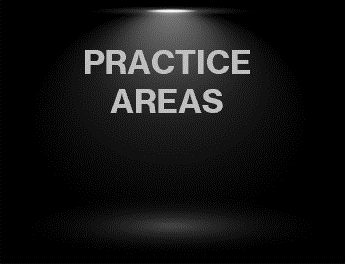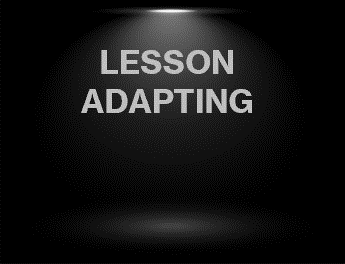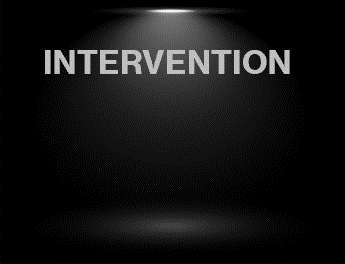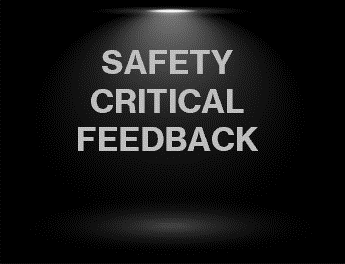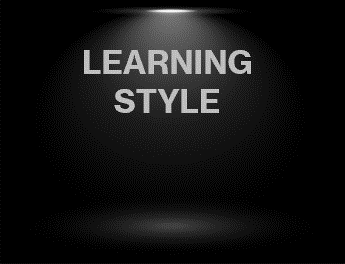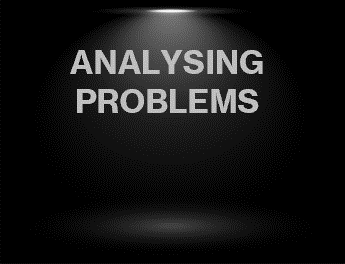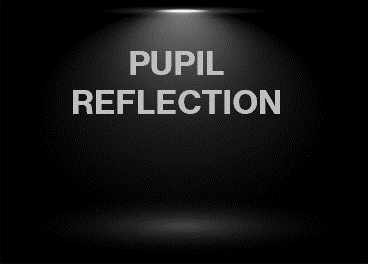EXAMPLE 1.
INSTRUCTOR
"Good morning Paul. So we've set our Goal for today's lesson and you want to try moving onto real roads and get out of this car park.
Are you still happy to do this?"
PAUL
"Yes I'd really like that, the car park was great for me to build up my skill of clutch control and knowing how much steering I needed to get me around corners, and about how I need to look around me before I move off from a stationary position, but the car park is so spacious that I cant judge the size of the car very well and because it is so spacious it's makes it unreal to know what I'm looking out for when I would be parked in a road. I think if there was a kerb alongside the car I would be able to judge the size of the car and the position of it in the road easier and understand how looking around me before moving off makes more sense"
INSTRUCTOR
"That's really good Paul, car parks are ok to give you less pressure to start with and get used to the pedals steering and a general awareness of your surroundings but are not a true reflection of driving on the roads. Being on the road will make things feel more real as well.
So, what do you think will be additional things that we may have to deal with once we get out onto the roads?"
PAUL
"Well obviously cars! But also pedestrians, cyclists and motorbikes, parked cars, road works?"
INSTRUCTOR
"Great! that's a nice list to start with, I can see you're thinking more about thing other than just cars, well done!
Is there anything else you could think of that might become a concern?
PAUL
"Ermm, not at the moment, I don't think so"
INSTRUCTOR
"OK. So there are other things we will need to consider when on roads, which is why the theory side of driving is important.
When we drive a car, there are lots of rules that we must abide by, priorities to know who can go or who needs to stop in certain situations, Legalities with things like tax, Insurance and Mot's but we can can discuss them later. But there are many things that we must also do as a driver to keep ourselves and everyone else safe. This isn't just while we are driving but also when we are stationary.
Are the anythings you could think about that me might need to do even when are car is stopped?"
PAUL
"I'm not sure"
INSTRUCTOR
" Well, what might happen if when we pull in to finish the lesson, we both got out of the car without looking around us first to see if it is safe to get out?"
PAUL
"Oh blimey yeah! If we open the door without looking, we might open it into the path of a vehicle overtaking us."
INSTRUCTOR
"Exactly! So what things might you think we would need to consider when we slow down coming to the end of a road?"
PAUL
"Errr, making sure we stop?"
INSTRUCTOR
"Yes that is important so we don't roll out into oncoming traffic. Is there anything you think would be important?"
PAUL
"Errr, let people know which way we are going"
INSTRUCTOR
"OK, so how are you going to do that?"
PAUL
"I could put on a direction signal"
INSTRUCTOR
"Do you know how to operate them?"
PAUL
"Yes my Dad's got a similar car to this and I see him doing it"
INSTRUCTOR
"Ok so while we are here, do you want to show me how to put on a left and the a right signal?"
PAUL
"Sure, it's easy. I push this up for turning right and pull it down for turning left."
INSTRUCTOR
"Ok that's great. So thinking about coming to the end of the road and letting other road users know you want to turn left or right, when would you put the signal on?
PAUL
"I suppose as I get near to the end of the road?"
INSTRUCTOR
"Ok. Is there anything else you may need to do before you get to the end of the road before you put your signal on?
PAUL
"Yes, I would need to slow down"
INSTRUCTOR
"Alright so you'd slow down and then put a signal on? Anything else before this?
PAUL
"Ermm I don't think so"
INSTRUCTOR
"So what might happen if we slowed the car down first quite quickly and something was behind us?"
PAUL
"They might hit us"
INSTRUCTOR
"Yes they might. So what else should we think about doing before we slow down?
PAUL
"OH, I suppose I should use my mirrors first"
INSTRUCTOR
"I see you used the word mirrors. Tell me what mirrors you might use then?"
PAUL
"Well I've been watching my Dad quite a lot recently and I always see him use his mirrors when he turns left or right.
He uses the centre mirror and left door mirror before he turns left, and centre mirror and right door mirror before he turns right"
INSTRUCTOR
"That's really good to hear Paul, do you think your Dad is a good driver?"
PAUL
"Yeah, he's been driving years now and is really confident"
INSTRUCTOR
"That's really nice to hear Paul. Would you like to drive like him once you've passed your test?"
PAUL
"Yeah my Dad's a great driver!"
INSTRUCTOR
"So thinking about what mirrors your Dad uses when he turns left and right, do you understand why he uses the particular ones that he does?
PAUL
"Yeah, he says we must be aware of cars behind us and how close they are and left or right mirrors to see that no one is close to us or overtaking before turning left or right".
INSTRUCTOR
"That is really good Paul and it's nice to see your Dad helps with explaining things to you about driving.
So thinking about our initial lesson goal of getting used to driving on real roads and turning left into and out of roads, how do you feel about having to deal with checking your mirrors, putting on a signal and slowing down before you get to the end of the road?"
PAUL
"That's a lot more to deal with than I've done in the car park"
INSTRUCTOR
"Yes it is, so is there anything I could do as we start to introduce this that would make it easier for you to deal with it"
PAUL
"That would be good."
INSTRUCTOR
"Alright, what parts would you like me to deal with for you for now?"
PAUL
"Could you check everything around me is ok before I slow down and put my signal on for me,
just until I'm comfortable with getting used to stopping at the end of the road?"
INSTRUCTOR
"Of course I can Paul. SO if you deal with the slowing down of the car with the footbrake and stopping us as close to the Give-way line without crossing it, and I'll take care of what is behind us as well as to the side of us, and also put on your direction signal when it's necessary. If there are vehicle behind us as we start to slow down I will let you know so that you don't hit the brakes hard, is that ok?"
PAUL
"Yes, that would help me lots, thanks!"
INSTRUCTOR
"So before we move off, is there anything else that you would like me to take car of or advise you on before we get going?"
PAUL
"Actually yes, can you advise me when to start slowing down"
INSTRUCTOR
"Yes of course I can"
PAUL
"Brilliant, shall we get going?"
INSTRUCTOR
"For sure, We'll do a a little lap around this estate turning left, left, left , and left, I'll give you instructions on the way around so that you will know when the junctions are coming up. The route will bring us back to here and we can pull in and see how you got on. If on the journey you are not happy or need any additional assistance please let me know, and if there is possibly something that arises that I think you may have missed I will ensure either verbally or physically I can intervene to keep us safe and we can pull in and have a discussion about it afterwards. Are you ok with that?"
PAUL
"Yep let's do this!"
INSTRUCTOR
"Ok,
So, when it is safe to do so, you can drive on"
This is just an typical style of conversation that you and your pupil may have before each lesson. It create a shared responsibility for the risks that may be encountered based on what lesson subject you may be covering.
As the lesson progresses, the pupil may find that they will be capable of dealing with the introduction of them checking the mirrors. At this stage you need to reassess the sharing of risk between you and them and confirm the new responsibility that they are taking on.
There may be need for Full guidance from you to start with, followed by prompting and the allowing the pupil to make all the decisions for themselves.
The aim for your pupil should always be that the end result is the responsibility for risk assessment and dealing with it is purely down to them.
The timescale for this to happen will be shared between both of you and how quickly your pupil learns.
Some pitfalls that New instructors tend to fall into, is setting up the responsibility for risk with their pupils and then totally disregarding those roles.
When we think about the use of
G.U.I.
GUIDED Instruction
Prompted Instruction
And then Independent driving from the pupil
It is easy for the roles to be set up and the Instructor has agreed with the pupil that they will prompt the pupil if necessary, and then a couple of minutes into the next practice session they revert to fully guiding the pupil.
This is not looked at lightly by an examiner marking you for your Part 3 or standards check and would be deemed as Over-Instructing.
If you set the roles for responsibility then you must stick with them until such time that you agree with your pupil to change those roles.
As your role is to ALWAYS ensure the learning location is safe, there will always be the case that "running in the background" you are always there to step in should the need arise, but with a correctly planned route, a concise set of planned roles and responsibilities, clear instruction when necessary and the level of your pupil's goals have been set that meets your pupils current ability and experience, there should be no reason for you to step in unless some unforeseen situation arises from another road user.
If we just step back a little to the example above, if the instructor is doing their job well they would have listened with intent to their pupil during the two-way conversation while setting up the responsibility for risk.
Things the Instructor should have picked up on, is that the learner has already started to gain a skill of risk assessment in driving.
Did you pick up on the parts where the leaner mentioned :-
"Well obviously cars! But also pedestrians, cyclists and motorbikes, parked cars, road works?"
"Oh blimey yeah! If we open the door without looking, we might open it into the path of a vehicle overtaking us."
"Errr, let people know which way we are going"
"I suppose as I get near to the end of the road?"
"Yes, I would need to slow down"
"They might hit us"
"Yeah, he says we must be aware of cars behind us and how close they are and left or right mirrors to see that no one is close to us or overtaking before turning left or right".
"Could you check everything around me is ok before I slow down and put my signal on for me,
just until I'm comfortable with getting used to stopping at the end of the road?"
"Actually yes, can you advise me when to start slowing down"
All of those little snippets from the example conversation shows that the pupil has some understanding of RISK.
Those snippets just need to keep building and it's your role as the instructor to help keep building them with your pupil.
If ever there is an opportunity to build on an area of risk, then give your pupils questions that may make them challenge their thoughts to grab answers for areas that they might not initially have thought of.
Give them time to think - don't just step in and answer for them.
You know the answers, let them try and find them first before supplying them.
Obviously, if they don't know the answer, you can try and re-word questions in a slightly different manner that may change their thought pattern and evoke a new answer. But if after a few different questions they genuinely may not know or understand your question and an answer may need to be given.
Looking back at the area of Guided, Prompted and Independent.
If you set up these roles you MUST stick to them until it is agreed that you are going to change them.


